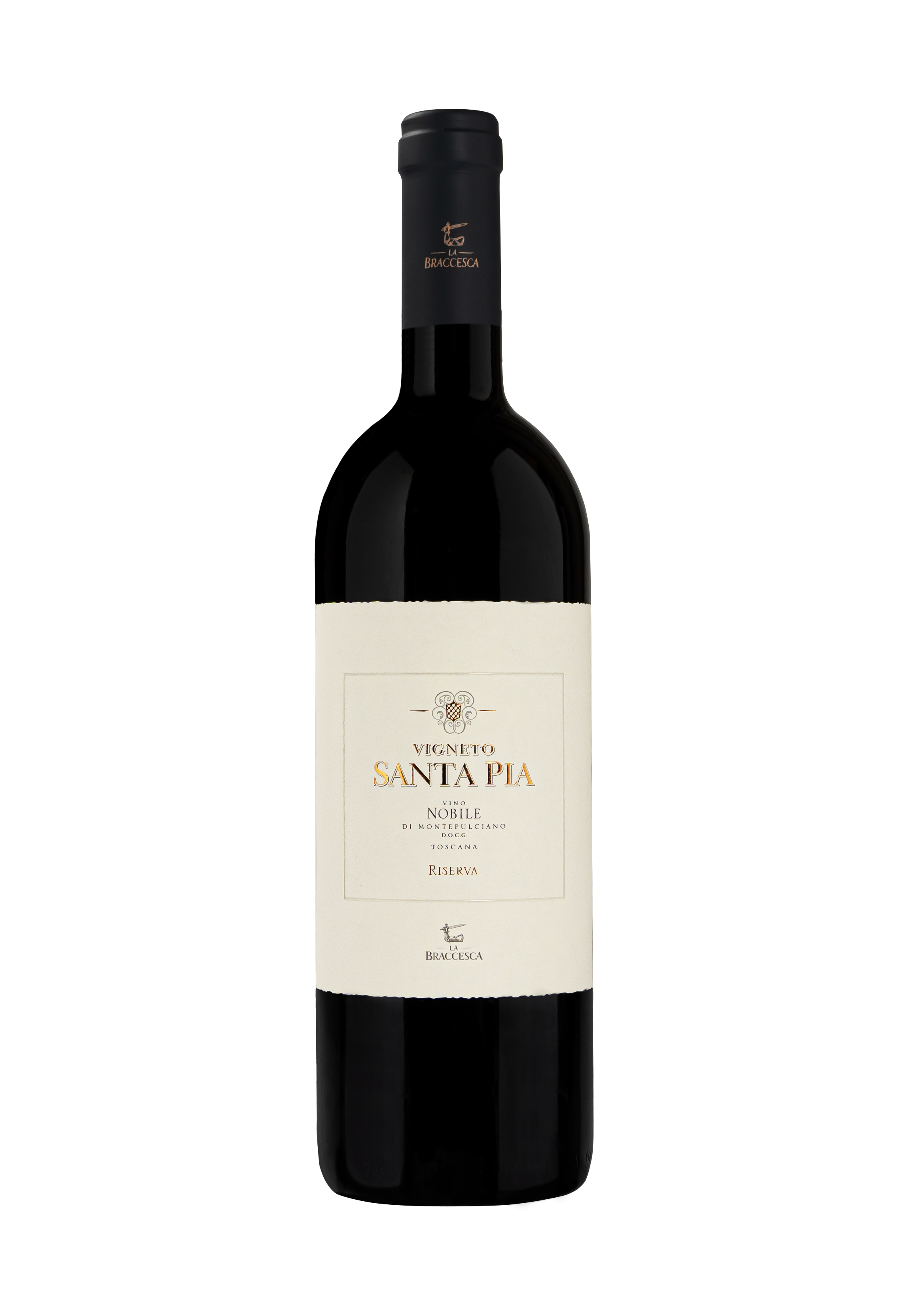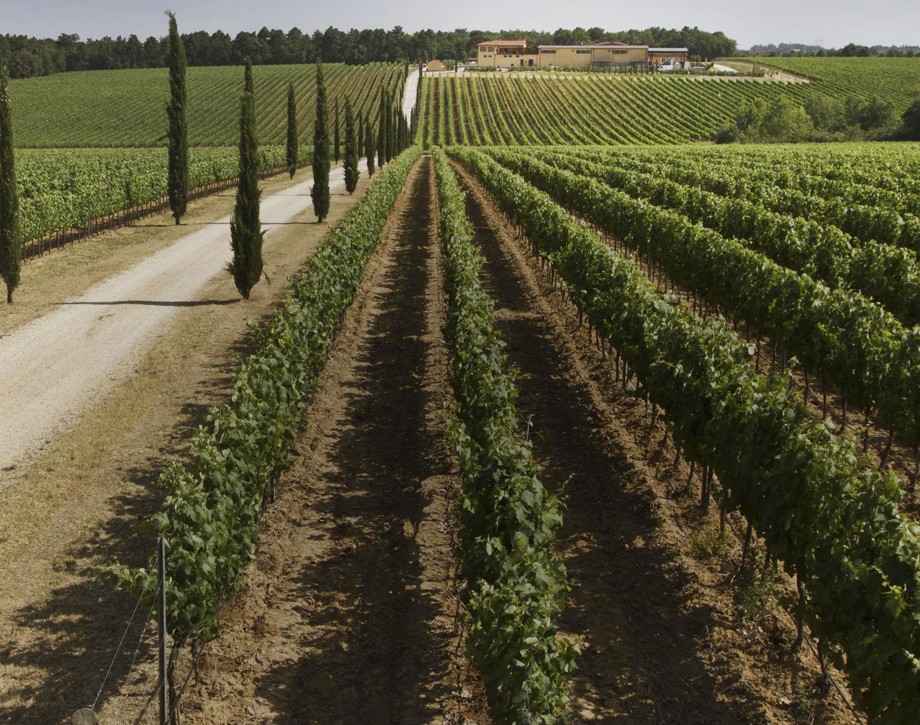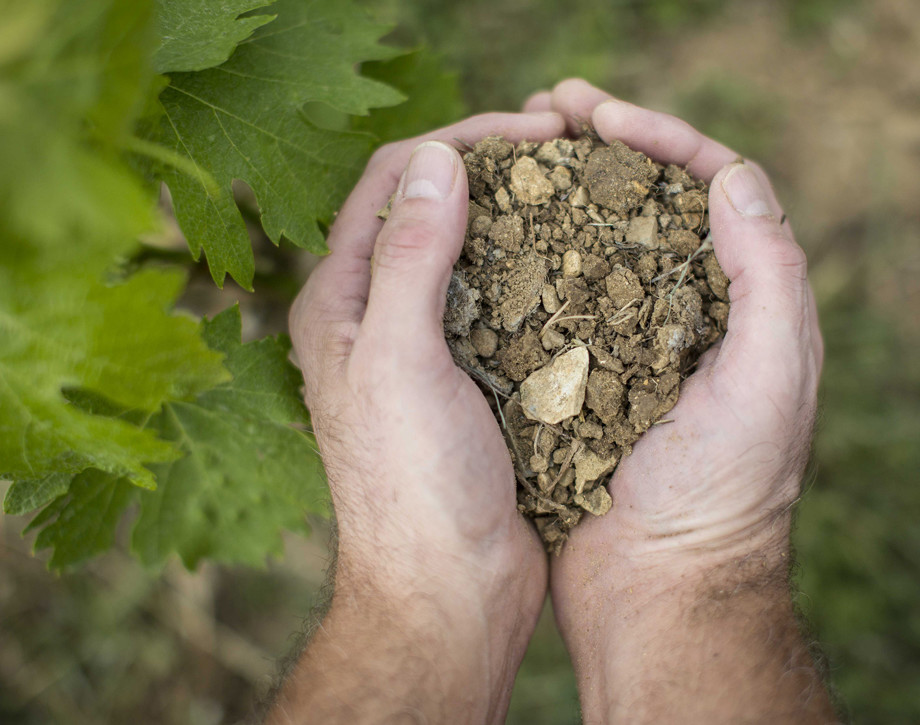Vigneto Santa Pia

Climate
The winter of 2009-2010 was rainy and cold. The bud burst of the vines took place around mid-April, and the rains during the flowering did not disturb bud set. A cool summer and a warm, dry September led to a slow and gradual ripening of the grapes and allowed the harvest to be delayed and to be carried out over an extended and carefully calculated period of time. Picking began in mid-September and concluded almost at the end of October. The careful and professional management of the vineyard and a favorable climate during the growing season gave grapes of excellent quality.
Vinification
The grapes of the Santa Pia vineyard, one with a very important potential for high level Prugnolo Gentile due to its excellent soil and microclimate, were picked during the first ten days of October. After a rigorous selection of the finest bunches, the grapes were destemmed and given a soft pressing. The fermentation lasted approximately 20 days, after which the wine went into 60 and 80 gallon (225 and 300 liter) oak barrels, where it went through a complete malolactic fermentation and aged for 16 months. The wine was then bottled and given a further 20 months of bottle aging before commercial release.
Historical Data
The La Braccesca estate covers some 1255 acres (508 hectares) where once were located the holdings of the Bracci counts, who gave their name both to the property and its count of arms: an armor-clad arm holding a sword. The overall vineyard surface consists of 850 acres (340 hectares) and is divided into two blocks: the first, 575 acres (233 hectares) is situated on the border between Montepulciano and the neighboring township of Cortona. The second, instead, 255 acres (103 hectares) insize, arrives close to the city itself and includes three highly renowned sub-zones for the production of outstanding red wine: Cervognano, Santa Pia, and Gracciano. Santa Pia is produced from a 37 acre (15 hectare) vineyard situated in the site of the same name, located the terraces below the town of Montepulciano. Its unique soil, medium in texture and consistence, rich in stones and sand, have assisted the ambition to produce an elegant, but at the same time classic, example of Sangiovese, one capable of transmitting the a highly recognizable expression of this historic production zone. The first year of production of Santa Pia was the 2001.
Tasting Notes
The 2010 Santa Pia reflects the character of its vintage, one which - thanks to the favorable climate of the growing season - assisted in the production of wines of great structure and elegance. The nose shows notes of tobacco and pepper along with ripe red fruit. The palate is sweet with velvety tannins, together with savory mineral notes that give further expressiveness to the wine’s aromas, bringing back the red fruit together with tobacco and vanilla. The finish and the aftertaste are savory and long.
Awards
James Suckling 92/100 USA

The Wine
Santa Pia is produced from a 15-hectare (37 acres) vineyard in an area called Santa Pia, located on the ridges just below the town of Montepulciano. This particular area has sandy loamy soils rich in rocky deposits known as “scheletro” that allow the Antinori’s to create an elegant yet traditional expression of the Sangiovese grape that reflects the characteristics of this historic winemaking area. The first vintage to be produced was 2001.

Climate
The winter of 2009-2010 was rainy and cold. The bud burst of the vines took place around mid-April, and the rains during the flowering did not disturb bud set. A cool summer and a warm, dry September led to a slow and gradual ripening of the grapes and allowed the harvest to be delayed and to be carried out over an extended and carefully calculated period of time. Picking began in mid-September and concluded almost at the end of October. The careful and professional management of the vineyard and a favorable climate during the growing season gave grapes of excellent quality.
Vinification
The grapes of the Santa Pia vineyard, one with a very important potential for high level Prugnolo Gentile due to its excellent soil and microclimate, were picked during the first ten days of October. After a rigorous selection of the finest bunches, the grapes were destemmed and given a soft pressing. The fermentation lasted approximately 20 days, after which the wine went into 60 and 80 gallon (225 and 300 liter) oak barrels, where it went through a complete malolactic fermentation and aged for 16 months. The wine was then bottled and given a further 20 months of bottle aging before commercial release.
Historical Data
The La Braccesca estate covers some 1255 acres (508 hectares) where once were located the holdings of the Bracci counts, who gave their name both to the property and its count of arms: an armor-clad arm holding a sword. The overall vineyard surface consists of 850 acres (340 hectares) and is divided into two blocks: the first, 575 acres (233 hectares) is situated on the border between Montepulciano and the neighboring township of Cortona. The second, instead, 255 acres (103 hectares) insize, arrives close to the city itself and includes three highly renowned sub-zones for the production of outstanding red wine: Cervognano, Santa Pia, and Gracciano. Santa Pia is produced from a 37 acre (15 hectare) vineyard situated in the site of the same name, located the terraces below the town of Montepulciano. Its unique soil, medium in texture and consistence, rich in stones and sand, have assisted the ambition to produce an elegant, but at the same time classic, example of Sangiovese, one capable of transmitting the a highly recognizable expression of this historic production zone. The first year of production of Santa Pia was the 2001.
Tasting Notes
The 2010 Santa Pia reflects the character of its vintage, one which - thanks to the favorable climate of the growing season - assisted in the production of wines of great structure and elegance. The nose shows notes of tobacco and pepper along with ripe red fruit. The palate is sweet with velvety tannins, together with savory mineral notes that give further expressiveness to the wine’s aromas, bringing back the red fruit together with tobacco and vanilla. The finish and the aftertaste are savory and long.
Awards
James Suckling 92/100 USA

Tenuta La Braccesca
The estate’s name comes from the historical farm that once stood there, owned by the Count of Bracci, whose coat of arms appears on the estate’s logo; an arm covered with armor brandishing a sword. Marchesi Antinori acquired the estate in 1990. The property extends over an area of 508 hectares (1255 acres) and the vineyards cover an area of 340 hectares (840 acres) divided into two blocks: the first is 366 hectares (904 acres) of which 237 (585 acres) are planted with vineyards and is located on the border between the cities of Montepulciano and Cortona. The other block is 142 hectares (350 acres) of which 103 (254 acres) are planted with vineyards, it extends all the way to Montepulciano encompassing three of the most famous parcels of land known for the production of great red wines: Cervognano, Santa Pia and Gracciano.

Soil
Sandy loam rich in very fine gravel.
















